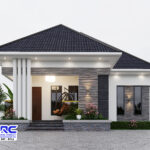The foundation is the most critical part of any building, as it determines the strength, stability, and durability of the structure.
In Nigeria, where soil conditions vary across regions, the depth of a house foundation depends on factors such as soil type, building load, and environmental conditions.
Bullionrise consult will explain the standard depth for house foundations in Nigeria, the factors that influence depth, and how to determine the best foundation for your building project.
Table of Contents
Toggle
Standard Depth of a House Foundation in Nigeria
The typical depth of a house foundation in Nigeria is 900mm to 1,500mm (3 to 5 feet) below ground level.
However, this can vary based on the type of soil, building design, and foundation type.
Foundation Depth Based on Soil Type
1. Firm, stable soil (e.g., laterite, compacted sand):
- Depth: 900mm to 1,200mm (3 to 4 feet)
- Example: Common in most parts of Nigeria, including Lagos, Abuja, and Enugu.
2. Weak or loose soil (e.g., clay, swampy areas):
- Depth: 1,200mm to 2,500mm (4 to 8 feet)
- Example: Found in Bayelsa, Port Harcourt, and some parts of Lagos (e.g., Lekki, Ajah).
3. Rocky ground (e.g., granite, lateritic rock):
- Depth: 600mm to 900mm (2 to 3 feet)
- Example: Common in Jos, parts of Abuja, and Ekiti.
The weaker the soil, the deeper the foundation should be to prevent settlement and cracks.
See also – 20 main building materials for building and their uses
Types of Foundations and Their Depths
The type of foundation chosen depends on the building height, soil condition, and budget.
1. Strip Foundation (Shallow Foundation) – 900mm to 1,500mm (3 to 5 feet)
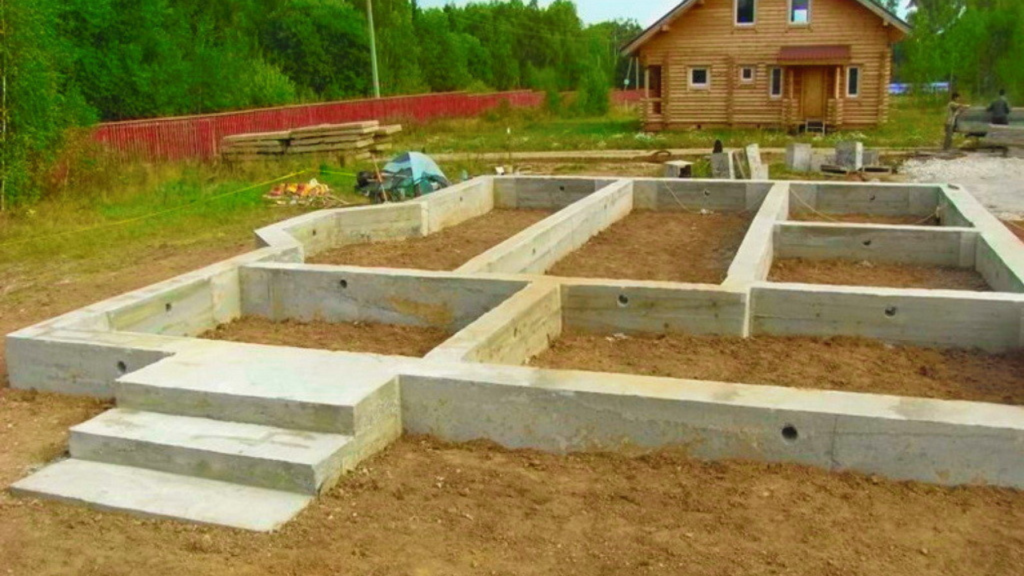
- Used for bungalows and duplexes
- Suitable for firm, stable soil
- Most common in Nigeria
2. Raft Foundation – 1,200mm to 1,800mm (4 to 6 feet)
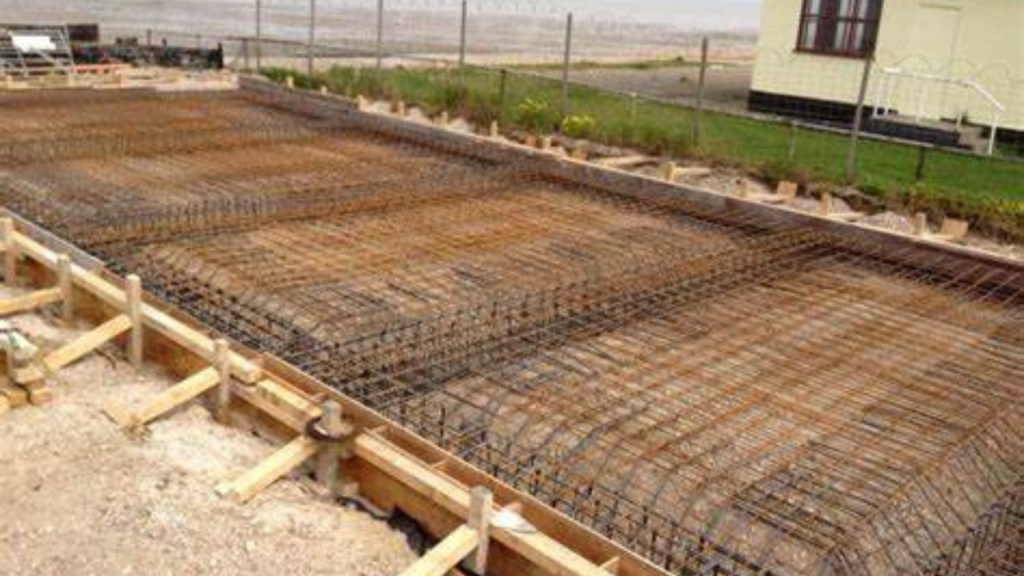
- Used in swampy or weak soil areas
- Ideal for multiple-story buildings
- Helps distribute weight evenly
3. Pile Foundation – 10m to 30m (33 to 100 feet)
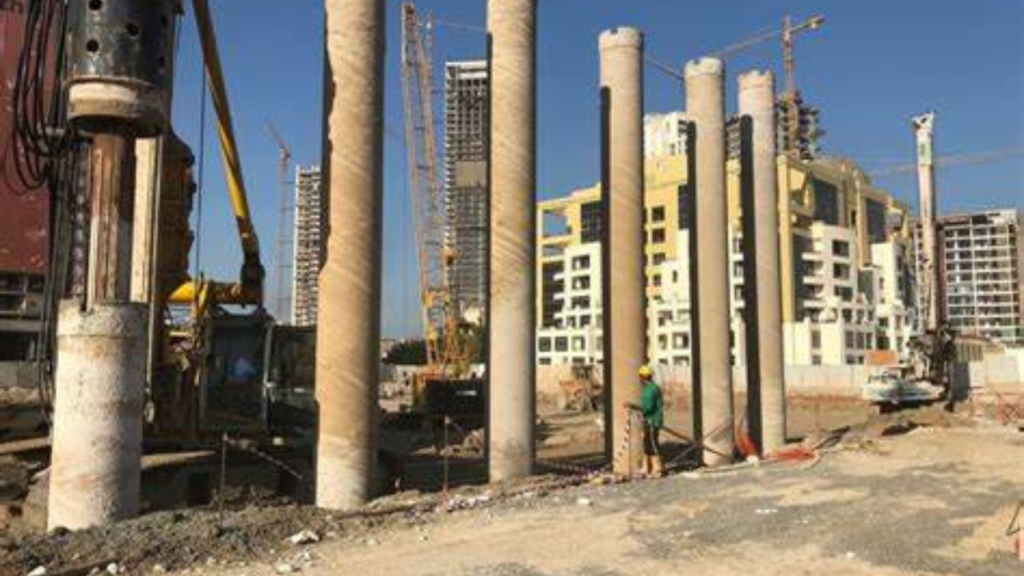
- Used in coastal and waterlogged areas
- Required for high-rise buildings and bridges
- Expensive but very strong
4. Pad Foundation – 900mm to 1,500mm (3 to 5 feet)
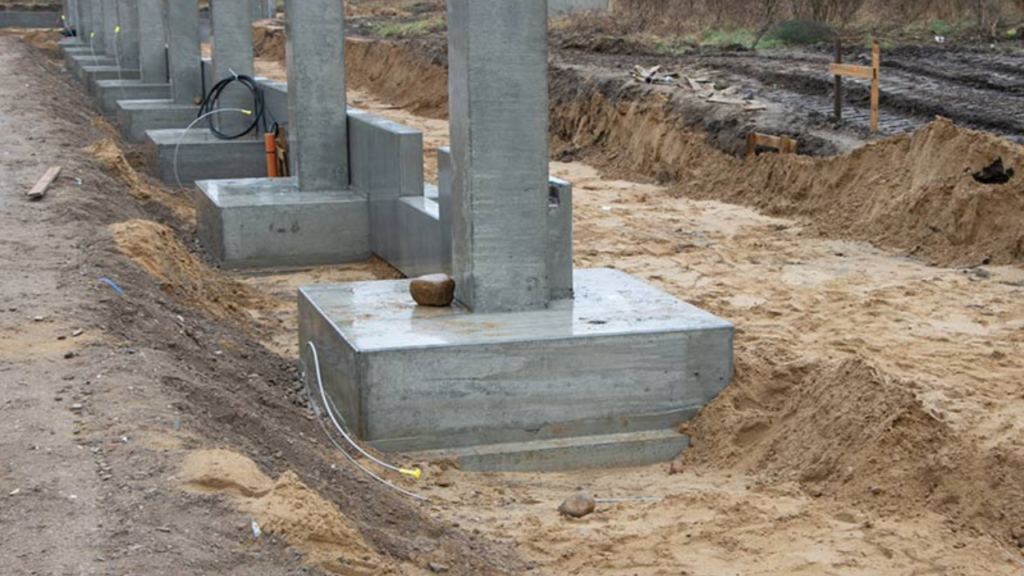
- Used for light structures like carports and small buildings
- Suitable for rocky and stable soil
Factors That Affect Foundation Depth in Nigeria
Several factors influence how deep a foundation should be:
- Soil Condition – Weak soil requires deeper foundations.
- Building Height – A two-story house needs a deeper foundation than a bungalow.
- Water Table Level – In flood-prone areas, deeper or raft foundations are needed.
- Climate – Areas with heavy rainfall may need deeper foundations to prevent erosion.
- Budget – Deeper foundations cost more but provide better stability.
See related – What are the 4 Types of Building Foundations in Nigeria?
Conclusion
How Deep Should You Dig Your Foundation?
For most houses in Nigeria:
- Bungalows: 900mm – 1,200mm (3 – 4 feet)
- Duplexes: 1,200mm – 1,800mm (4 – 6 feet)
- Weak soil areas: 1,500mm – 2,500mm (5 – 8 feet)
- High-rise buildings: 10m – 30m (33 – 100 feet) with pile foundation
The right depth depends on soil condition, building type, and environmental factors.
Always consult a structural engineer before digging your foundation to ensure safety and durability.
Frequently asked questions
What factors determine the depth of a house foundation in Nigeria?
The depth of a foundation depends on factors such as the soil type, the weight of the building, and the local climate.
For instance, areas with loose or sandy soil may require deeper foundations to ensure stability.
The presence of a high water table or flood-prone areas also influences the depth.
Additionally, the type of structure—whether it’s a single-story or multi-story building—plays a significant role in determining the foundation depth.
What is the average depth of foundations for residential buildings in Nigeria?
For most residential buildings in Nigeria, the foundation depth typically ranges between 1.2 meters (4 feet) and 2.5 meters (8 feet), depending on the soil’s bearing capacity and the building’s size.
Shallow foundations are common for single-story homes, while deeper foundations are used for multi-story structures.
However, site-specific conditions may require adjustments to these averages.
Consulting a structural engineer ensures the foundation depth is appropriate for the project.
How does soil type affect the required foundation depth?
Soil type is a critical factor, as strong soils like gravel and sand can support shallower foundations, while weaker soils like clay or silt may require deeper ones.
Loose or unstable soil may necessitate additional reinforcement or deeper excavation to reach a stable layer.
Conducting a soil test helps determine the soil’s bearing capacity and guides the foundation design.
Proper assessment ensures the building’s stability and prevents future settlement issues.
Are there specific building codes or regulations for foundation depth in Nigeria?
Yes, Nigeria’s National Building Code provides guidelines for foundation design and depth to ensure safety and structural integrity.
These regulations consider factors like soil conditions, load requirements, and environmental risks.
Adhering to these codes is mandatory to avoid penalties and ensure the building’s safety.
Consulting a licensed structural engineer ensures compliance with these standards.
What is the difference between shallow and deep foundations in construction?
Shallow foundations are placed near the surface and are suitable for lightweight structures or strong soil conditions.
Examples include strip footings and raft foundations.
Deep foundations, such as pile or caisson foundations, extend deeper into the ground to reach stable soil layers and support heavier loads.
The choice between shallow and deep foundations depends on the building’s weight, soil conditions, and site-specific requirements.












